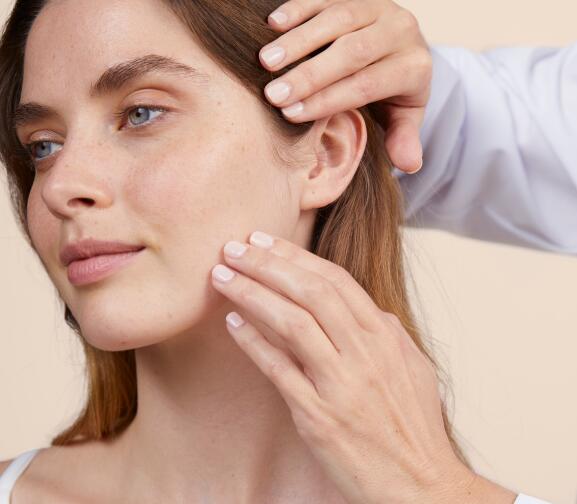Baby's skin problems: recognising and treating them
Nappy rash
Nappy rash manifests itself as uncomfortable redness on your baby's bottom. Small spots sometimes appear.
This dermatitis on the bottom is caused by urine and faeces, either because they have been left in the nappy for too long or because of their acidity. This happens because of diarrhoea or loose stools associated with teething.
To relieve discomfort and redness, Cicalfate+ Repairing Protective Cream is ideal for repairing, purifying and soothing babies' skin. Allowing your baby’s bottom to breathe without a nappy for about ten minutes several times a day will also help your baby to heal and get their soft baby skin back. You can take advantage of this time to soothe them further with the Thermal Spring Water Spray.
If your baby's skin is prone to maceration, stop applying the cream and turn to Cicalfate Absorbing Repair Spray.
Eczema
Baby eczema, also known as atopic dermatitis, is an inflammatory skin condition that occurs in an allergy-prone environment: atopy. It affects more than one in ten babies.
The symptoms are dry skin, with red and itchy patches occurring in eczema flare-ups. The cheeks, arms and hands are the areas affected in the first months of a baby's life. After one year, eczema becomes more concentrated to the skin folds of the young child.
The causes are often genetic, although certain dietary and environmental factors can favour its appearance.
Baby eczema requires consultation with a paediatrician or dermatologist to ensure proper treatment. A fragrance-free skincare routine based on emollients then increases the effectiveness of the prescribed treatment.
Our laboratories have designed the Xeracalm A.D range to restore the barrier function of your baby's skin and soothe itching. The cream or the balm should be applied once or twice a day as a preventive measure to protect and nourish the skin, while the cleansing oil or the ultra-rich cleansing bar cleanse your baby's skin during bath time. This should be done with water between 32°C and 35°C and should not be for more than ten minutes. Find out more tips for your baby's daily hygiene.
Intertrigo: what should you use on your baby's neck?
Your little one may have intertrigo if redness is visible in the folds of the neck, as well as on the groin, thighs, or any area where two skin surfaces come into contact. This discomfort and redness on your baby's neck is in fact caused by two sensitive areas of your baby's skin rubbing together. It can be intensified by a warm and humid environment.
This harmless skin condition in newborns is also known as skin fold dermatitis and mainly affects babies under one year of age.
Some good practices for getting rid of this skin problem in babies:
- Leave this part of the body to breathe freely as much as possible.
- Wash sensitive areas with a gentle, fragrance-free baby wash to prevent infections and allergies.
- Dry your baby by dabbing the towel rather than rubbing.
- Soothe your baby with the Thermal Spring Water Spray.
- Help repair irritated necks with Cicalfate+ Repairing Protective Cream.
- Don't cover your baby with too much clothing, especially at night.















